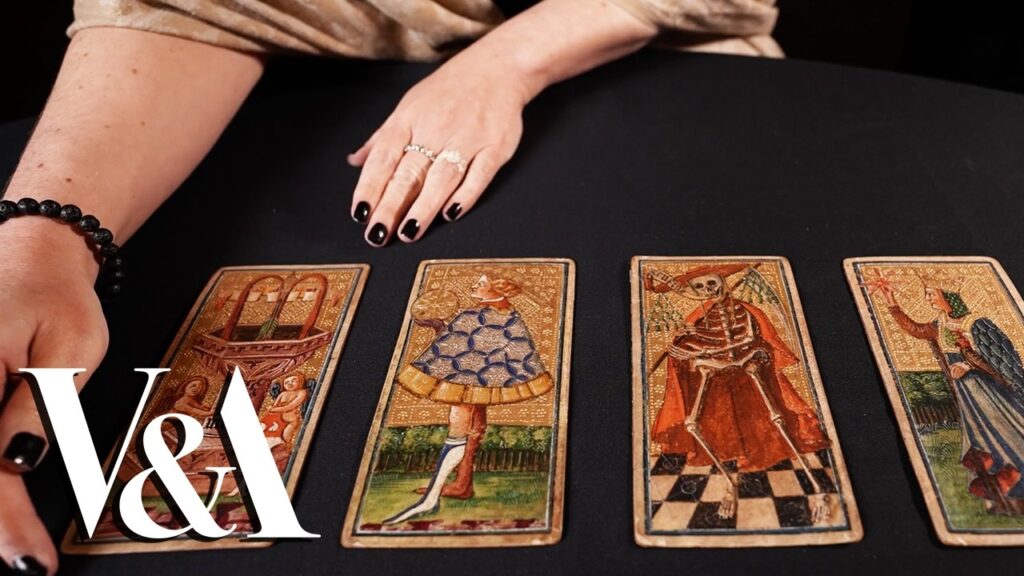
"Whether or not we believe that the cards of the tarot have super­nat­ur­al pow­ers, we all think of them pri­mar­i­ly as tools for div­ina­tion. It might seem as if they've played that cul­tur­al role since time immemo­r­i­al, but in fact, that par­tic­u­lar use only goes back to the eigh­teenth cen­tu­ry. They were, at first, play­ing cards, used for a game known as taroc­chi in Renais­sance Italy."
"The word itself pos­si­bly orig­i­nates from the term sminchiare, "to play your high­est card" (though in Sicil­ian dialect today, it has a rather dif­fer­ent mean­ing). Lat­er, cir­ca 1807, comes Le Petit Ora­cle des Dames, "the petite ora­cle of women," the ear­li­est deck in the video express­ly pro­duced for car­toman­cy, or pre­dic­tion of the future through cards - albeit only as a form of light enter­tain­ment for gath­er­ings of ladies."
Tarot cards originated as Renaissance Italian playing cards used for tarocchi and related games. The eighteenth century marked the beginning of tarot use for divination. Collections include early decks such as the Minchiate, linked to a more complex Florentine card game, and Le Petit Oracle des Dames (c.1807), created expressly for cartomancy as light entertainment. Luxurious examples such as the Tarocco Soprafino feature copper-plate engraving and colored stenciling. Museum holdings preserve these decks as evidence of the cards' evolving functions and artistic techniques across centuries.
Read at Open Culture
Unable to calculate read time
Collection
[
|
...
]